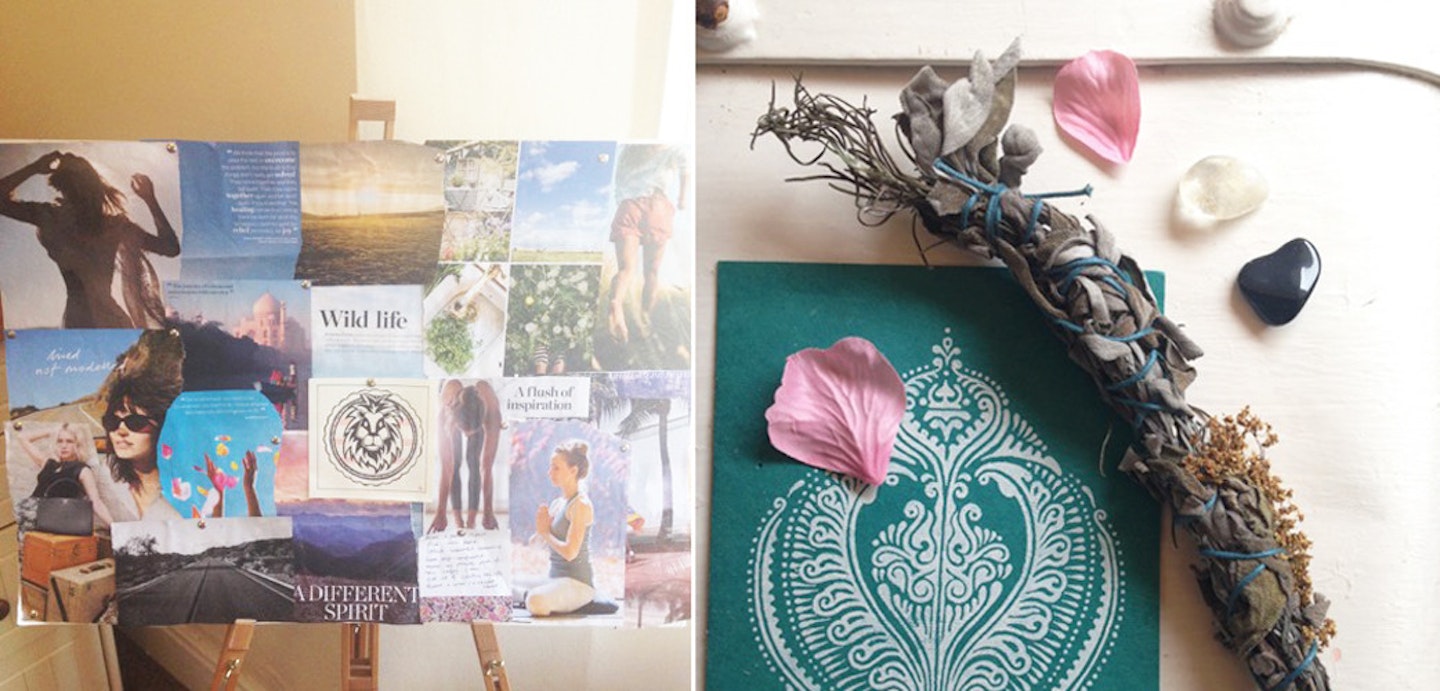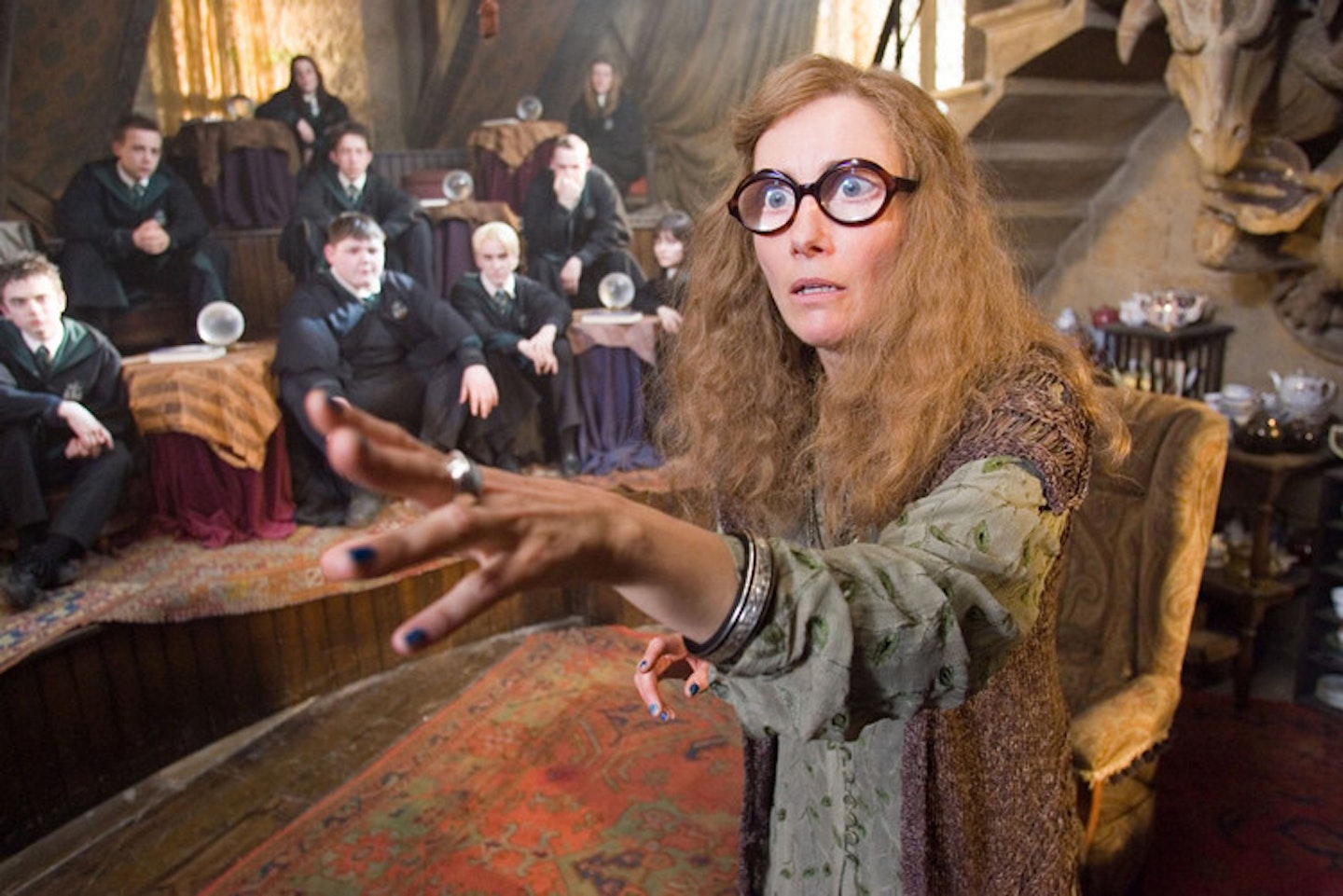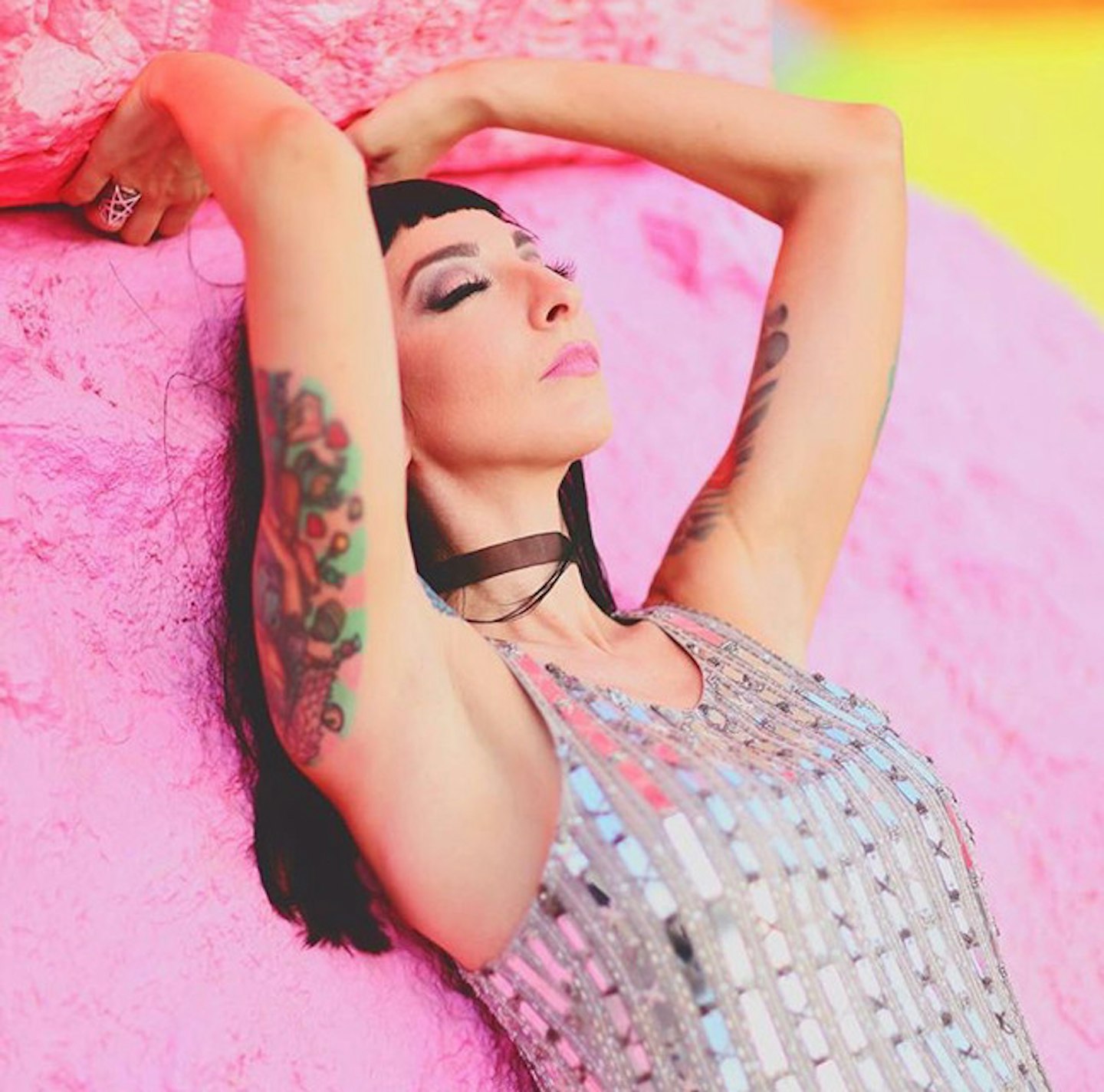This morning, after yoga practice, writing in my gratitude journal and cleansing my crystals, I got my potion book out all ready to cast a money spell when a thought crossed my mind: ‘WTF has happened to you girl?’, I said to myself.
With a search for ‘witch’ showing over 2,500,000 posts, the alter of Instagram suggests I’m just one of a new breed of young woman taking my worship of all things mystical to the next level, by dabbling in witchcraft.
Magic has conjured its way into popular culture in a big way recently. Mysticism is cool, you might say it’s mysticool. High Priestess has gone high fashion this season with AW16 catwalks dominated by capes at Prada, neck collars at Osman and Salem-style floaty gowns at JW Anderson and Alexander McQueen. Instagram stars like Rachel Howe of Small Spells and Bri Luna a.k.a. ‘The Hoodwich’(a Vogue favourite) sell tarot cards, crystals, sage bundles and candles to their adoring fans, while Sabat, a new magazine exploring contemporary witchcraft has tapped into the zeitgeist with its stylish design. It seems witches today are less broomsticks and boils and more sparkly talons, impeccable eyeliner and the perfect choker.

Beyond the catwalk a New Age revival is in full swing. Far removed from the anti-capitalist hippie ideals of the 1960s, peace and love is now big business. Sitting alongside the larger wellness and back-to-nature #CabinPorn trends, a diverse range of New Agey practices have not only become fashionable status symbols but aspirational lifestyle goals.
This cultural construction which includes everything from crystals and chakra meditations to yoga and #cleaneating, could be seen as part of a bigger shift in attitudes. For ‘spiritual but not religious’ millennials, witchcraft is yet another expression of our movement away from the conventional and conservative to the mystical and alternative. It’s quitting the 9-5 and turing your ‘side-hustle’ into a business (BTW, didn’t side-hustle’s used to be called ‘hobbies’?). It’s long-term travel as a digital nomad. It’s living the Generation Rent brand. It’s six years of the Tories. It’s Brexit. Syria. Trump.
When you feel powerless against a world of change in which the dark side appears to be winning, who doesn’t want to conjure some magic to make it all go away? Mysticore is the perfect antitode to normcore after years of austerity as we embark upon yet more political and socio-economic uncertainty: it’s both flamboyant and introspective, other worldly and everyday. Think along these lines: if Professor’s Trelawney’s Divination class did #Everydaysexism and fast fashion.

The sense of individual power in this shift has been noted by trend-forecasting firm K-Hole. In ‘A Report on Doubt’, the New York team who brought us the term ‘normcore', explore the theory of ‘Chaos Magic’. ‘Living in the same realm as the cult of positive thinking’, it relates to The Secret style manifestation practices present in the spiritual shopping bag of many millennials. Think Pinterest vision boards and YouTube hypnosis to visualise your ideal holiday.
'I do tarot and oracle cards as part of my morning routine. It’s not about fortune telling but more of a self-help practice to help me see how I can approach situations differently,’ says Heather, a fiction writer from Yorkshire. 'I also do spell work around the cycles of the moon, so on the new moon I’ll start new projects and set intentions and then with the waning moon I’ll banish bad habits, declutter, write a list of the things I don’t need in my life then burn it in my cauldron.’
The New Age movement, popularised by the hippies of the 1960s, has undergone a rebrand in the self-help and social media age: enter #mysticore.
It was bound to happen. Looking back over my childhood and teenage years, witches and the supernatural were rampant in the culture I consumed. We’re the generation who grew up with Harry Potter, a set of stories centred around black and white magic with a fiercely intelligent Hermione at their centre; The Craft was the film of the 90s and Charmed and Buffy were never off our TV screens.
Today, witchcraft has grown up. Purveyor of cool, Tavi Gevinson told Dazed Magazine in their latest issue that, 'one thing that’s so attractive to me (about the witch) is the idea of being unafraid to embrace your own power, even at the expense of being polarising to others’.
Blogger Gala Darling, whose posts on New Moon Rituals have gained her a cult following, has capitalised on that power. She has tattoos, a seriously hot boyfriend and a seemingly glamorous New York lifestyle. Maybe that’s why I’m one of the suckers who shelled out over £300 for entry into her ‘Radical Self Love Coven’- an online course teaching the basics of crystals, tarot and casting spells. Part of the attraction for me was the opportunity to connect online with other like-minded women: ‘a sense of community’ is a common reason I’ve heard from those interested in witchcraft. Many of us have a deep desire for spiritual connection. We long for a sense of community. Unsurprisingly then, the coven has emerged as a symbol of sisterhood.

‘I first started to become interested in mystical stuff from the internet, following people like the Hoodwitch and Witches of Bushwick on Instagram. Apart from crystals and stuff being incredibly beautiful, I was also attracted to the idea that there was this “source” energy that I could tap into. The more into I became the more I wanted to connect with other like-minded people so attended a couple of courses and met some really amazing women’ says Lauren, 27-years-old.
Far from witchcraft and wiccan being something embarrassing that you have to hide, it’s now celebrated as a symbol of female power.
The symbol of the witch has a historical link with feminism. Take WITCH: The Women’s International Terrorist Conspiracy from Hell. Formed in 1968 as an offshoot of another protest group, New York Radical Women, their goal was to smash patriarchy in all its forms: sexism, capitalism and racism. They did so with hit-and-run style guerrilla acts like on Halloween 1968, when members staged a hex on the New York Stock Exchange and secretly glued the doors shut so that the bankers couldn’t get in.
‘If you are a woman and dare to look within yourself, you are a Witch,’ their manifesta stated. Another leaflet proclaimed: ‘You are a Witch by being female, untamed, angry, joyous, and immortal.’ They claimed witches as the original female rebels and used their brand of ‘magic’ as political activism.

There’s no denying that ‘witch’ has become a highly gendered term. However, the links between feminism and witches have been somewhat willed into existence.
‘People often forget that it was men and women who were accused of being witches,’ says Alison Rowlands, a historian at the University of Essex. ‘The idea, picked up by many second wave feminists, that women were killed because they had healing powers the Christian church found threatening, is not based on historical fact.’
This points to another reason for the ongoing popularity of witch culture: because of it’s base in ritual and mythology as well as history it’s adaptable. From characters in children’s stories, to the lazy girl’s favourite Halloween costume, through to feminist icon and fashion inspiration, over the centuries witches have morphed from feared to fun.
Ironically, a bit of childish fun preceded the Salem witch trials and all that’s come since. ‘When the Salem witch trials kicked off in 1692, one of the things that preceded them was a group of young girls getting together and using white magic to predict who they would marry and what trade their sweethearts will be’. For a 17th century girl, the greatest indicator of how life would play out was what social status you achieved through marriage.
Something Alison said to me when we spoke struck a chord: ‘Personally, I don’t find the idea of modern witchcraft very empowering. The idea that young women are working spells because that’s the only way they can sort out personal or financial problems makes me think we are failing them as a society. I would rather young people were given other coping strategies and systems to support them.’
(To be honest, when I’ve been summoning the earth, air, fire and water to conjure some extra cash, it has occurred to me that it might not be the best use of my time and perhaps I should… you know… do some work or do something about the things standing in my way…unfair house prices? There’s probably a spell for that.)
Millennials are also often accused of being self-involved: more interested in selfies than saving the world. K-Hole’s report may even back this up: ‘Chaos Magic creates realities which are temporary and subjective… It’s not a tool for changing others — it’s a tool for changing yourself.’
If witchcraft is about power, it seems to me that the really key question is: What are we doing with our power? When women come together in a coven, what are we talking about? What are we doing it for? If modern-day witchcraft is about fashion and doing love spells, while totally fine, aren’t we sort of missing something?
I think of my friend Shell, whom I met at Wiccan-esque Wisdom Gathering in the Welsh countryside to celebrate the Autumn Equinox. She is a dreadlocked vegan yoga teacher from Huddersfield who loves reggae so much she put the two together to create Reggae Yoga (so fun). She forages for wild sage to make her own smudge sticks. She steams her vagina. She is also one of the most inspiring community activists I’ve ever met, running arts workshops for carers and creating a community allotment so young people can learn to grow their own food. We spoke last week about how difficult it is to make ends meet with this kind of work. Isn’t that the problem? As a society we find it easy to ridicule the dreamers amongst us and their much-needed contributions to our communities. Unless, of course, there is a giant pound sign attached.
We want facts: logic and judgement. We want business plans. We want evidence. As a result we fail to value the softer, more esoteric, emotional and even more feminine parts of ourselves. Sometimes a turn inwards to search the soul, to heal, to access another layer of consciousness is needed so we can wake up and do something about the seemingly endless and unsolvable problems we face like sexism, racism, poverty, environmental destruction, animal cruelty. All the annoying things that hippies and witches and wiccans have been going on about for decades.
Mysticore: a bit of harmless frippery or a sign that we have lost faith in the system and think only spells can save us? The symbol of the witch can be much more than this season’s trend, but only if we harness our power for something greater than casting a money spell to make up for our measly millennial wages.
Like this? You might also be interested in:
How Pick N' Mix Spirituality Became The 20-something Religion Of Choice** **
What Even Is Numerology? And Why Is Everyone Talking About It?
Follow Tamsin on Twitter @Tamsinwrites
This article originally appeared on The Debrief.
